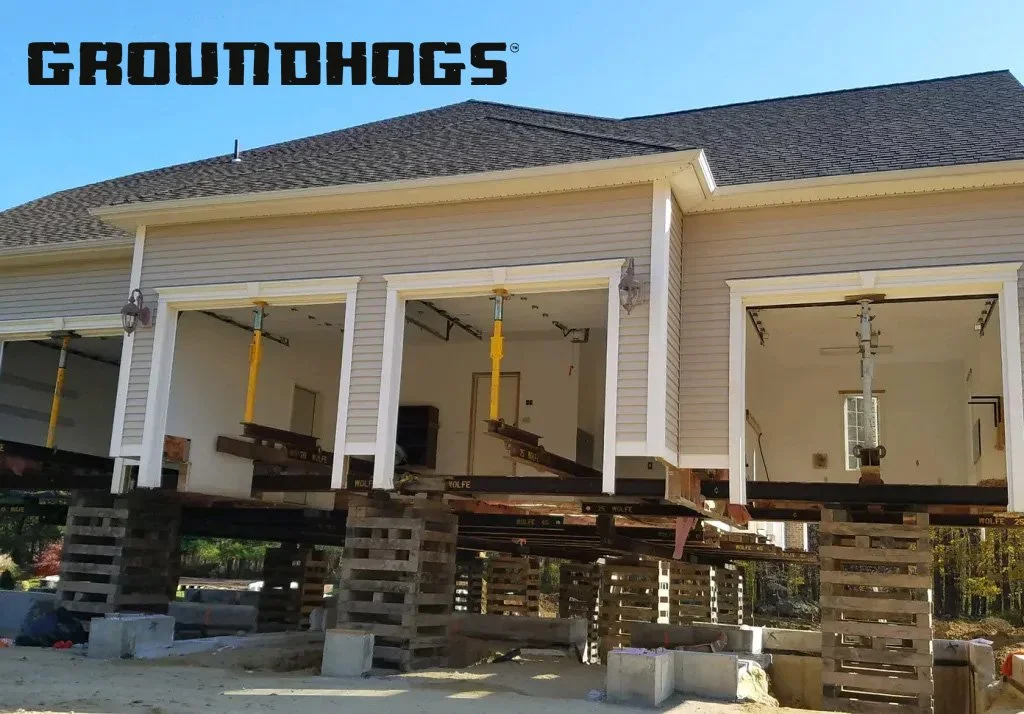Groundhogs Construction: Building Strong Foundations for the Future
Groundhogs Construction: Building Strong Foundations for the Future
In the ever-evolving world of modern infrastructure, few companies embody resilience, precision, and reliability quite like Groundhogs Construction. Much like their animal namesake, groundhogs, who are known for their persistence, careful excavation, and attention to their burrows, the company has earned a reputation for its meticulous approach to groundwork and structural development. Since its inception, Groundhogs Construction has stood out as a leader in sustainable construction practices, technological innovation, and community-oriented growth. This essay explores the company’s history, philosophy, operations, and impact on the construction industry while examining how its approach reflects broader trends in sustainable and adaptive construction.
1. The Origins and Philosophy of Groundhogs Construction
Groundhogs Construction was founded with a simple mission: to deliver quality projects rooted in integrity, craftsmanship, and innovation. The company began as a small, family-owned business focusing on residential developments and has since expanded into a diversified enterprise handling commercial, industrial, and infrastructure projects nationwide.
The founders envisioned a company that combined traditional construction values—like precision and accountability—with modern technology and green design. This dual commitment became the cornerstone of their philosophy: build smarter, dig deeper, and grow stronger. The name “Groundhogs” itself captures this ethos: a nod to creatures that work below the surface, emphasizing the unseen effort, stability, and preparation required for lasting success.
2. Core Services and Expertise
Groundhogs Construction offers a broad range of services that cover every stage of the building process. Its portfolio includes:
Excavation and Foundation Work: Known for its exceptional precision in site preparation, the company uses advanced surveying tools and sustainable excavation techniques that minimize soil disruption.
Residential Construction: From custom homes to high-rise apartments, Groundhogs Construction emphasizes energy efficiency, natural lighting, and eco-friendly materials.
Commercial Projects: The firm has completed office complexes, retail centers, and educational facilities designed to meet modern architectural standards and local zoning regulations.
Infrastructure Development: Roads, bridges, drainage systems, and public utilities form a critical part of their operations, supporting regional growth and community accessibility.
Renovation and Restoration: The company also takes pride in preserving historical structures, using modern engineering to restore heritage buildings without compromising their cultural integrity.
Across all these sectors, the defining factor remains the company’s precision and attention to groundwork—ensuring stability and durability in every structure it builds.
3. Technology and Innovation
Groundhogs Construction has embraced technology as a vital force in its expansion. The company integrates digital modeling, automation, and smart monitoring systems into its workflow.
Building Information Modeling (BIM)
By employing BIM software, the team can visualize entire projects in three-dimensional space before construction begins. This reduces errors, optimizes materials, and enhances coordination among architects, engineers, and contractors.
Drone and GIS Mapping
Drones are now a standard feature in their site inspection process. These aerial tools provide real-time mapping, volume calculations, and environmental assessments, ensuring accuracy and safety.
Automation and Robotics
In certain operations, automated machinery assists with repetitive or hazardous tasks. This not only boosts efficiency but also ensures worker safety—an essential part of the company’s operational philosophy.
Sustainable Materials and Smart Design
Groundhogs Construction invests heavily in research on alternative materials like recycled concrete aggregates, low-emission asphalt, and modular steel systems. The company has also pioneered passive-solar and smart-insulation designs for energy-neutral buildings.
4. Sustainability and Environmental Responsibility
A defining feature of Groundhogs Construction’s brand identity is its commitment to sustainability. Recognizing that the construction industry contributes significantly to global carbon emissions, the company has taken proactive steps toward eco-friendly practices.
Green Building Certification
Many of its projects pursue LEED (Leadership in Energy and Environmental Design) or equivalent certifications. This ensures energy efficiency, reduced waste, and responsible resource use.
Waste Management
The firm follows a “zero-waste construction” model where possible—recycling debris, repurposing materials, and partnering with suppliers who maintain environmentally friendly production standards.
Water and Soil Protection
Groundhogs Construction has also developed innovative techniques to prevent soil erosion and groundwater contamination during excavation. These methods protect local ecosystems while maintaining structural integrity.
Renewable Energy Integration
Several of the company’s flagship buildings feature rooftop solar panels, geothermal heating, and energy-efficient HVAC systems—reducing operational costs and environmental footprints over the long term.
5. Workforce and Culture
At the heart of Groundhogs Construction lies a culture of respect, safety, and continuous learning. The company’s workforce is a diverse team of engineers, architects, technicians, project managers, and tradespeople, all trained in the latest construction technologies.
Training and Professional Growth
Groundhogs Construction runs an internal academy that offers certification courses, technical workshops, and mentorship programs. Employees are encouraged to pursue professional development to stay ahead of industry standards.
Safety First
Safety is treated as a core value rather than a compliance requirement. Regular safety audits, site drills, and digital monitoring systems ensure minimal risk exposure for all workers.
Inclusivity and Teamwork
The company also champions gender diversity and inclusivity in an industry often dominated by men. Initiatives like “Women Build the Future” and “Youth Apprenticeship Pathways” are examples of their community-driven employment programs.
6. Signature Projects
Over the years, Groundhogs Construction has completed numerous high-impact projects that demonstrate its technical prowess and community commitment.
Urban Renewal Projects
In several cities, the company has revitalized outdated industrial zones into mixed-use developments featuring affordable housing, green spaces, and public amenities.
Transport and Infrastructure
Groundhogs Construction has been involved in major highway expansions and bridge restorations that improve connectivity and safety. Its innovative use of prefabricated components has reduced construction time and minimized disruptions.
Educational and Healthcare Facilities
The company’s focus on public service extends to schools and hospitals built with cutting-edge energy systems and accessibility features. These projects exemplify its mission to build not just for profit, but for people.
Sustainable Housing
One of its flagship projects, the “Green Burrow Estates,” incorporates solar energy, rainwater harvesting, and locally sourced materials—setting a benchmark for sustainable suburban development.
7. Economic and Social Impact
Groundhogs Construction plays a critical role in the regional economy. By creating jobs, supporting local suppliers, and investing in infrastructure, it fuels long-term economic growth.
Job Creation
Each major project generates hundreds of direct and indirect employment opportunities. Through skill-development programs, the company ensures these benefits extend to underserved communities.
Community Engagement
The firm actively collaborates with local authorities and non-profit organizations to improve public facilities, sponsor community events, and support environmental clean-ups.
Economic Resilience
By prioritizing long-term value over short-term gain, Groundhogs Construction has demonstrated resilience even during economic downturns—maintaining steady growth through strategic planning and diversification.
8. Challenges and Adaptation
Like any large enterprise, Groundhogs Construction faces ongoing challenges in regulation, cost management, and environmental adaptation.
Regulatory Complexity
The construction sector operates under strict safety, zoning, and environmental laws that vary by region. Navigating these frameworks requires constant coordination with legal and municipal bodies.
Supply Chain Volatility
Global disruptions—such as material shortages or transportation delays—can impact project timelines and costs. The company mitigates these risks through diversified sourcing and local partnerships.
Technological Adaptation
While innovation is a strength, rapid technological evolution also poses integration challenges. Continuous training and investment are necessary to stay competitive.
Climate Change and Resilience
As climate risks increase, Groundhogs Construction is rethinking design standards to withstand floods, heatwaves, and extreme weather events—making resilience a fundamental design principle.
9. The Future of Groundhogs Construction
Looking ahead, Groundhogs Construction aims to solidify its position as a leader in sustainable and digital construction. The company’s five-year strategy focuses on three key areas:
Smart Infrastructure: Integrating sensors, AI-driven monitoring, and predictive maintenance into public projects to enhance efficiency and longevity.
Global Expansion: Entering new international markets, particularly in regions prioritizing green urban development and renewable energy.
Carbon Neutrality: Committing to net-zero emissions across all operations by 2040 through renewable energy, efficient machinery, and offset programs.
The company’s research division, Groundhogs Innovation Lab, is also developing modular, prefabricated systems that can revolutionize affordable housing. These systems promise reduced construction time, lower emissions, and greater affordability—potentially transforming how communities grow in the 21st century.
10. Lessons from Nature: Why “Groundhogs” Matters
The choice of “Groundhogs” as the company’s name is more than branding—it represents a philosophy. Just as groundhogs build strong, intricate burrows to endure changing seasons, the company builds enduring structures meant to adapt over time.
This symbolic connection underscores three lessons that guide its operations:
Depth over Surface: True stability comes from what lies beneath—solid foundations, careful planning, and unseen effort.
Adaptability: Like groundhogs adjusting to weather, the company adapts to market, environmental, and technological shifts.
Sustainability: Nature’s balance inspires their approach to resource management, ensuring that every project coexists harmoniously with its environment.
In embracing this natural metaphor, Groundhogs Construction redefines what it means to build—not merely erecting structures, but creating ecosystems where people and nature thrive together.
Conclusion
Groundhogs Construction stands as a beacon of modern engineering blended with ecological responsibility. Its focus on sustainable materials, innovative design, and community development demonstrates that construction can be both profitable and principled. Through decades of commitment, the company has proven that strength lies not only in concrete and steel, but also in vision, ethics, and adaptability.
In an era when the world faces mounting challenges—from climate change to urban overpopulation—Groundhogs Construction reminds us that progress begins from the ground up. By digging deeper into technology, sustainability, and human values, the company continues to build not just structures, but legacies.

